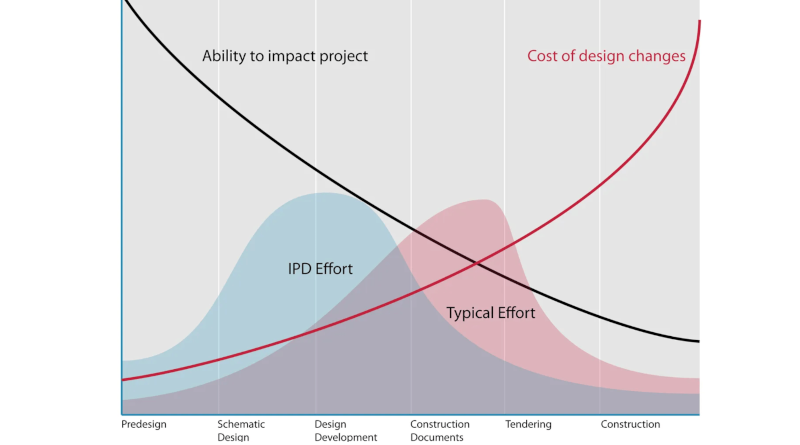When does PreCon Begin?
LOOKING BACK
The term “Preconstruction” (“PreCon” for short) is vague and its meaning and content has been evolving over the decades.
For project owners and developers it has nearly always included everything needed before the first spade hits the site: market research/needs assessment, investigation, financial proforma, funding, entitlements, design and so on.
For designers it has mostly meant from the time the architect/engineer is retained till construction starts … and maybe a bit past in design-build or fast-track construction.
For builders it used to mean the time from award of contract to mobilization, and included mostly procurement, including “buying out” the trades, and early planning.
LOOKING FORWARD
But the world of the built environment has changed rapidly. Design-Bid-Build (aka “low bid”) has been exposed for its high final cost and conflict-based delays, as explained here and here .

Contract models have evolved from mostly design-bid-build (the most expensive model possible) to predominantly design-build, progressive design-build and Integrated Project Delivery (IPD). Savvy owners on large projects now know that up front collaboration among all the potential parties is the smartest, least risky and highest value approach. This is because “in 2004, Architect Patrick MacLeamy drew a set of curves based on a pretty self-evident observation: an architectural project becomes more difficult to change the more developed it becomes.” He named it after himself. (Daniel Davis)
In traditional or “typical” projects (the pink area in the graphic), the entire group of people who touch the project really only understand the full aspects of design and impacts to costs and constructability as Construction Documents move to completion and “tendering” (purchasing and buy-out including trades) occurs leading to actual construction. This leads to late changes to enable constructability and to reduce costs. Because these changes are occurring at or past the intersection of the two MacLeamy lines, the costs of these changes is increasingly high.
That’s why, in this era, we have learned to frontload the design phase (the blue area in the graphic) with builders and trade partners who can provide input early and continuously. IPD does this inherently and Progressive Design-Build calls for it, as well. Regular Design-Build teams CAN do this, if they understand the importance.
This entire period can be called “PreConstruction”. And using that term triggers the thinking of builders and trade contractors to activate planning and procurement neurons in their brains to collaboratively prepare for construction during the Schematic and Design Development phases (see graphic).
What thinking is triggered in builders and trade contractors? We will discuss the specifics (and even a checklist) in upcoming articles in this series. Stay tuned.
(Graphic and quotation are courtesy of Daniel Davis from his blog based on his PhD thesis. https://www.danieldavis.com/macleamy/ Used by permission.)

